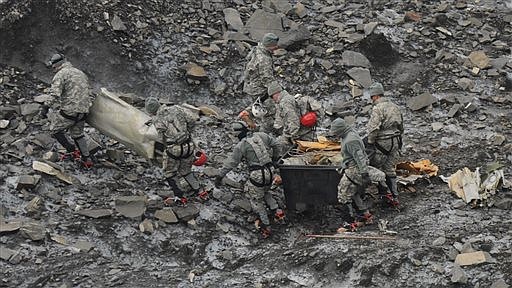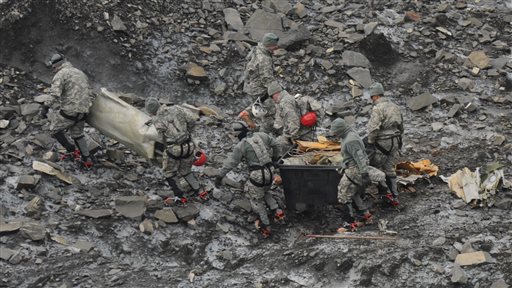ANCHORAGE, Alaska - The remains of about a third of the service members who died when their military transport plane crashed into an Alaska mountain and then was buried for decades in glacier ice have been identified, military officials said Wednesday.
The Department of Defense released the identities of 17 people onboard the C-124 Globemaster, which crashed in 1952, and said the remains will be returned to their families for burial with full military honors.
The first believed burial is planned Saturday in Caney, Kansas, for Army Pvt. Leonard A. Kittle, said Tonja Anderson-Dell, a Tampa, Florida, woman who has researched the crash for years.
Her interest was stoked about the crash when her grandmother, now deceased, told her details of her grandfather, Isaac Anderson, 21, who died when the plane hit the mountain on Nov. 22, 1952. Anderson-Dell also maintains a Facebook page about the crash and recovery efforts.
The identifications were bittersweet for her because her grandfather wasn't among them.
"He wasn't part of the ones that will be coming home," she told The Associated Press by telephone Wednesday. "However, I am still happy for the families that are bringing their servicemen home."
The plane from McChord Air Force Base, Washington, was headed to Elmendorf Air Force Base in Anchorage when it went down with 52 crew members and passengers aboard.
Efforts to reach the crash site immediately after the crash were halted by bad weather. Days later, a member of the Fairbanks Civil Air Patrol, along with a member of the 10th Air Rescue Squadron, landed at a glacier and positively identified the wreckage as the Globemaster.
The civil air patrol member was Terris Moore, president of the University of Alaska. He later told reporters the plane "obviously was flying at full speed" when it hit Mount Gannett, sliding down the snow-covered cliffs, exploding and disintegrating over 2 or 3 acres, according to an Associated Press story from the time.
The heavy transport plane with 41 passengers and 11 crew members became buried in snow and likely churned beneath the surface of the glacier for decades. The Alaska National Guard discovered the wreckage in June 2012 on Colony Glacier, about 40 miles east of Anchorage.
An eight-man Joint POW/MIA Accounting Command recovered materials such as a life-support system from the wreckage and possible bones from the glacier two summers ago, and took the evidence to the command's lab in Hawaii for analysis.
Military officials said in a release that the remaining 35 service members have not yet been recovered from the wreckage, and the site will be monitored for possible future recovery efforts. Further details were not immediately available from a military spokeswoman who didn't return a message to The Associated Press.
Anderson-Dell said it is her understanding the military will continue to fly over the area to see if the glacier has given up any additional material from the wreckage.

